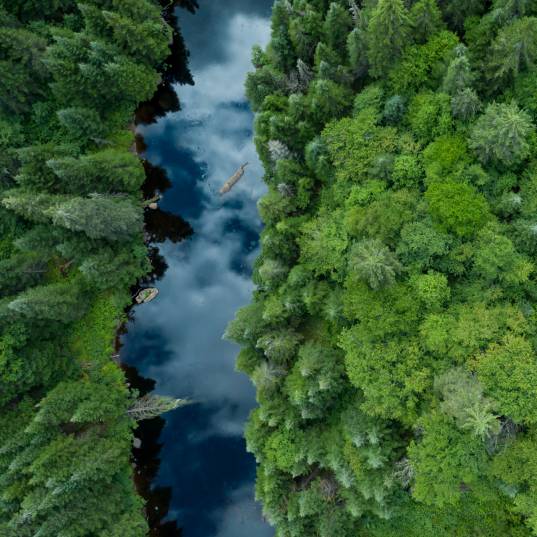In April 2025, two discoveries shook up global environmental awareness. One came from the abyss of the Pacific Ocean, an international study which found that 13,500 microplastics per cubic meter lay in the Mariana Trench, the deepest point on the planet. The other in a United States laboratory, where a scientific team presented samples of plastic remains encrusted in human arteries, revealing that not only are we surrounded by plastic, it’s inside us.
This is the background behind 2025 World Environment Day on 5 June with its aim of ending plastics pollution.
The key question now is not “where plastic has reached?” but “how can we stop it?”.
What you will learn about in this article:
What is World Environment Day? Origin and importance
 World Environment Day is one of the most important dates in the official United Nations calendar to raise awareness among governments, companies and civil society of the importance of promoting climate and environmental action, sparing no effort or resources.
World Environment Day is one of the most important dates in the official United Nations calendar to raise awareness among governments, companies and civil society of the importance of promoting climate and environmental action, sparing no effort or resources.
This date has been celebrated every June 5 since 1973, when it was established as World Environment Day at the United Nations Conference on the Human Environment in Stockholm, also known as the Stockholm Summit.
“One Earth” was the catchphrase of that conference, and this year 2024, more than 50 years later, it still carries the same, or perhaps even more, sense of urgency and commitment for those of us who threaten it. Without the diversity of food on which we subsist, without the clean air it provides us, without the water we drink from it, or the climate that makes life possible, humanity could not survive. Without the balance and resources of nature, the Earth would not be able to offer us what it does today.
“The Stockholm Conference was the first UN conference with the word “environment” in its title.”
One of its achievements was the creation of the United Nations Environment Programme (UNEP), an organization whose main objective was to become the environmental conscience of the United Nations and the world. It also designated June 5th as Environment Day, a date that reminds us that politicians, administrations, companies, and the civilian population must change their attitudes and truly live in a sustainable manner.
World Environment Day 2025: for a plastics-free planet
Today the things that sustain us – biodiversity, water, clean air, fertile soil – face significant challenges. The three big environmental crises we face today (climate change, biodiversity loss, pollution) are profoundly interwoven and plastics are common to all of them.
Each year, more than 430 million tons of plastics are produced, a large part of which is rapidly turned into waste. Less than 10% is recycled. The rest ends up in landfills, incinerators or is jettisoned directly into nature.
In the oceans, for example, plastic is present both on the surface and at its lowest depths, breaking up with time into microplastics which can enter the marine food chain. Recent studies also suggest that these materials can reach our bodies. This is not now solely an environmental problem, but a question of public health.
A global alliance for a world without plastics
In an international context framed by the urgent need to stop plastics pollution, a global alliance of countries has emerged as one of the most decisive players. It consists of the High Ambition Coalition to End Plastic Pollution, an initiative lead by Rwanda and Norway that has managed to bring together 60 nations with a common goal: form part of a global treaty that not only manages waste but attacks the root of the problem.
Apart from other proposals, this coalition advocates an integrated focus to limit plastics production, promoting re-use systems and ensuring rational environmental waste management.
The initiative is gaining momentum at a key time: negotiations for the UN’s Global Plastic Pollution Treaty are in full swing and expected to finish in 2025. While some countries and industrial groups are defending voluntary measures or are focused on recycling, the High Ambition Coalition embraces a more demanding vision.
As well as Rwanda and Norway, other countries including Germany, Canada, France, Peru and South Korea are participating in the coalition, which also has the backing of international organizations and civil society.
In the face of this global crisis, the Coalition proposes a paradigm change: passing from a “use and throwaway” economy to a circular system with products designed to last, be re-used and have a second life. A model that also creates jobs, reduces emissions and protects the health of the planet and people.
There is much to do. Yet, if the global treaty signed in 2025 contains proposals from the Coalition, the world will have taken an historic step, through specific international measures, toward a future free from plastics pollution and the transformation of our systems of production and consumption.
Fuente:
Journalist and content manager specialising in sustainability. Trained at the Carlos III University of Madrid, she works at the intersection between the environmental, the human and the organisational from a conscious and committed point of view.
Her texts seek to provide clarity and perspective, integrating a critical, conscious and documented look at the challenges of the present.
Collaborates in
Sustainability for allSpecializing in
Climate change
Sustainability
Environment